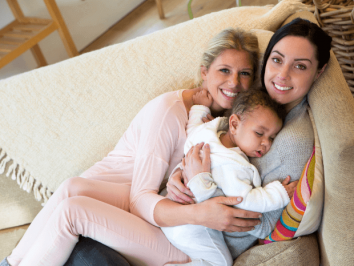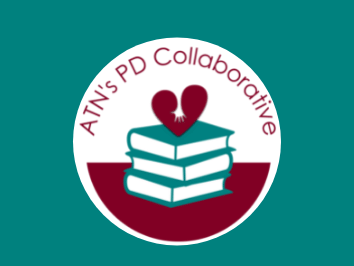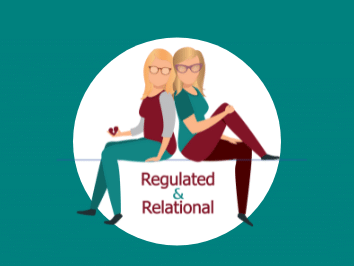Understanding Attachment
Attachment & Trauma Resources
EMPOWERING TRAUMA-INFORMED FAMILIES, SCHOOLS, AND COMMUNITIES
What is ATTACHMENT?
Attachment can be defined as a reciprocal relationship. In parenting (or child development) it generally refers to the relationship that develops first between the infant/child and his primary caregiver (often Mother). The quality of this attachment impacts the child’s physical, emotional, psychological and cognitive development. The quality of this primary relationship shapes the child’s basic ability to trust and how positively or negatively he views the world, himself and others. The quality of this first attachment impacts all other relationships.
When an infant experiences consistent care where his/her needs are met, he/she internalizes three things:
- I am safe
- I am heard
- I am valuable
With this as the foundation, a child can then develop other healthy relationships.
Psychoanalyst John Bowlby is considered the father of modern attachment theory. His definition of attachment is “the affectional tie between two people”. It begins with the bond between the infant and mother. This bond then represents how the child’s life relationships will be formed.
Bowlby stated, “The initial relationship between self and others serves as a blueprint for all future relationships.”
The importance of attachment affects more than just future healthy relationships. It also impacts a child’s ability to self-regulate. When an infant’s needs are met by a nurturing primary caregiver (mother), the infant’s emotional dysregulation is calmed. Over many repetitions of an infant feeling stress, expressing distress and receiving a nurturing response, the child is able to integrate this pattern as self-soothing during stressful times. This is important as the child matures into an adult who is able to handle disappointments, opposition and stressful situations by remaining regulated.
New research into attachment shows that there is a neurological and sensory link as well. Activities often attributed to “normal” parenting of an infant, such a rocking, bouncing, swinging, patting (burping) an infant activate the baby’s sensory system, and the positive sensory input becomes connected to the nurturing acts. Experts in neurodevelopment and sensory integration can show actual changes in the brain’s development due to this input or lack thereof. Children who have not had normal sensory input are at increased risk of not only attachment difficulties, but learning delays, social impairment and having a difficult time with change.
Stress chemicals, such as cortisol and adrenaline, can severely affect an infant’s brain development. So, the infant’s brain chemistry, specifically in utero and during the first year, can have a significant impact on the child’s ability to attach. Neurological research actually shows visible signs of difference in size and structure of healthy infant brains and those of infants who have been neglected or abused.
Links:
The Origins of Attachment Theory – a paper about John Bowlby and Mary Ainsworth and their work.
What is Attachment Theory? from About Psychology website
Serve and Return – a key concept from the Center for the Developing Child, Harvard University
Getting attached: Parental attachment and child development – blog from Brookings Institution, April 2015
The Importance of Early Childhood and Relationships – A 2013 Chicago’s Idea Talk – Dr. Bruce Perry (video)
Looking for Attachment-Focused Therapists? Check out ATN’s Resource Directory
More on Attachment
Residential Treatment: When Holding On Means Letting Go
–by Sara Borgstede This was originally posted on the author’s website, The Holy Mess – Balancing Faith, Family, and Fitness, on June 4, 2017. As we

Trauma without Healthy Attachment: How a Child Feels
–by Janyne McConnaughey, PhD I sat on the floor next to her. I understood her fear of abandonment, the trauma she had experienced, and how
Neediness: An Unintended Consequence of Shame
–by Janyne A. McConnaughey, Ph.D. originally published June 21, 2017 on Janyne’s blog I stood in the doorway. I was very small, maybe two. I was
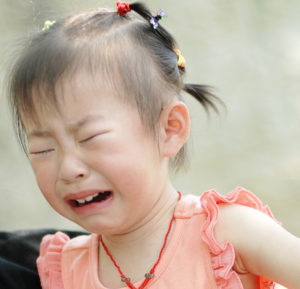
The Fine Art of Consequences – Part II
–by Julie Beem In my last post, I wrote about a mom in search of an appropriate consequence for her daughter’s misbehavior at school. I
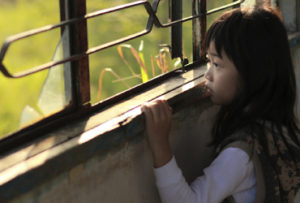
The 10 Most Common Myths about Attachment & Trauma
There is so much that society doesn’t understand about attachment and trauma. People don’t “get it” when it comes to how a child can be traumatized,

Attachment, Regulation, Competency (ARC) Model
The Attachment, Regulation, Competency Model (ARC) is a framework for intervention with youth and families who have experienced multiple and/or prolonged traumatic stress developed by
What Works & What Doesn’t
Let’s start with what DOESN’T WORK…and why: Traditional Psychotherapies — i.e. talk therapies, don’t work with children with an Attachment Disorder or those with early childhood,
The Dynamics of Disruption
By Nancy Spoolstra, DVM Although there are several possible explanations for why an individual, a couple, or a family chooses to add an unrelated child
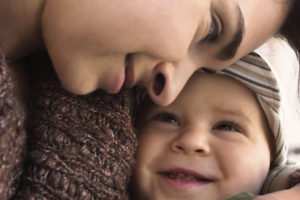
Signs of Attachment
There are countless lists and checklists available from a variety of sources, many of which are linked at the bottom of this page. Generally speaking…
ATN Resources
Parenting
Therapeutic Parenting - Empowering Trauma-Informed, Attachment-Focused Caregiving
Schools
Creating School-wide Trauma-Informed Reform led by Trauma-Focused Educators
Resource Directory
A comprehensive online directory of trauma-informed, attachment-focused helping professionals
PD Collaborative
Are you seeking trauma-informed Professional Development Training or Consultations for your School?
TSS Conference
Annual Creating Trauma Sensitive Schools Conference.
Podcast
Listen to our Bi-monthly Podcast on Trauma-Informed and Therapeutic Strategies
Shop ATN
Shop for resources and tools to empower and support children, families, schools and communities
Get Involved
Join ATN - Together we can end the silence around childhood trauma!
